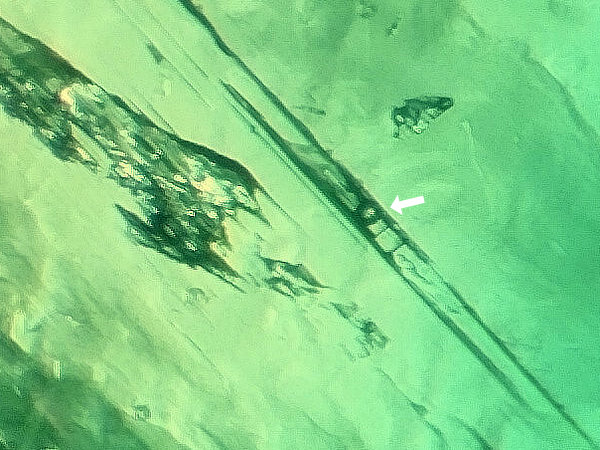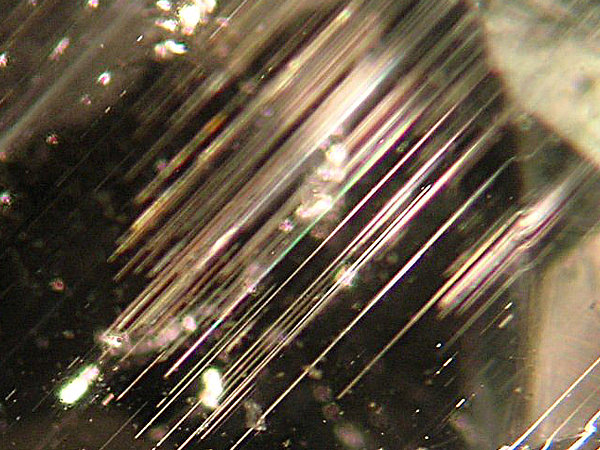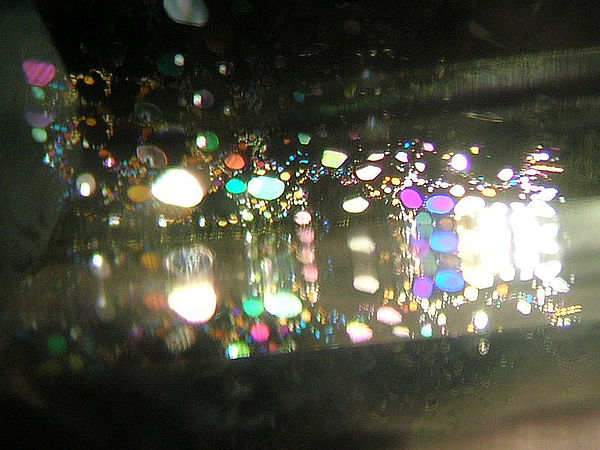Beryl Gemstones - Emerald and Aquamarine

Above A ring with uncut emerald crystals
Click here for larger image,
it opens in a new tab
Below The same ring, magnified to show a 3 phase inclusion. The arrow points
at the gas bubble, look 4 o'clock direction and see the square solid crystal, and the
inclusion if filled with liquid
Click here for full image,
I only used a small part for the picture on this page, it will open in a new tab.
The dark diagonal lines come from the changes in shape of the crystals


Above A typical emerald, with many inclusions and
fractures.
Below An emerald with a complex range of inclusions. The
brown crystals are probably pyrite, while the large crystal near
the top may be felspar, and the small black inclusions are
probably magnetite. The only way to be certain would be to cut
open the stone (thus destroying it) for chemical analysis.
Click here for larger image,
opens in a new tab

Beryl in its pure form is colourless, however
'impurities' within the crystals give it various colours
- emerald green is the best known. Beryl forms in granite
and crystals (not gem quality) can weigh up to a ton! Its
chemical composition is aluminium beryllium silicate.
Why are emeralds
normally fractured, while most aquamarines are clear? The answer probably
lies in the impurites which give emerald its beautiful colour. They also
make the stone brittle, thus increasing the chance it will fracture while
forming in the earth.
I have only mentioned the most common Beryl gems here.
Others include Yellow Beryl and Morganite, which varies between
pink, orange and purple.
Treatments before purchase
Assume emeralds have been fracture filled unless guaranteed
untreated. This filling may be lost eventually, but stones
can be re-treated. Emeralds are occasionally dyed to
improve the colour.
Aquamarine is easily available unflawed, so fracture filling is
not needed. However most stones are naturally a green blue,
and are heat-treated to remove the green tint. The
treatment is permanent
Cleaning
Beryl stones are easy to clean, but very hot liquids
are not advisable. Although hard, these stone - like
other gemstones - are somewhat brittle and can be damaged by a
severe blow.
Emeralds normally have inclusions, flaws and fracture
fillings; so they should not be soaked when cleaning. A
good emerald is valuable, take it to a
jeweller once a year to check its mount is secure, and the
jeweller can clean it at the same time.
Emerald
These are the bright green form of beryl and may have been
used in jewellery as early as 3500BC. However the early
emeralds were from Egypt and were badly flawed. It was only
after 1500AD that better quality stones were found in South
America.
Emeralds were the jewels of Venus, Goddess of Love. They were
thought to bring success in love. They were also linked to Diana,
guardian of women and young girls. The Ancient Egyptians believed
emeralds could heal eye diseases. They are the May
birthstone.


